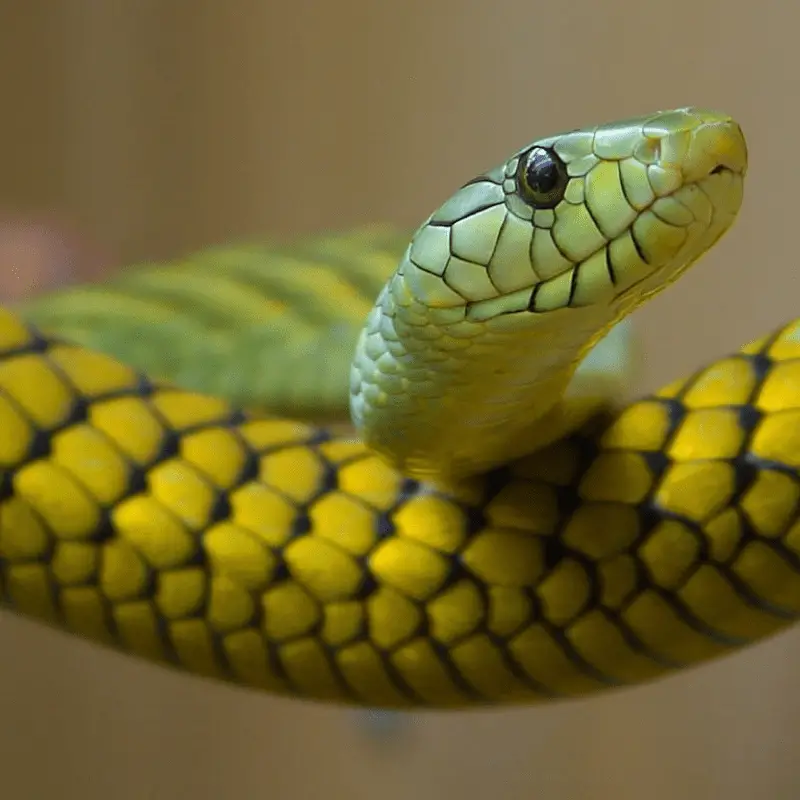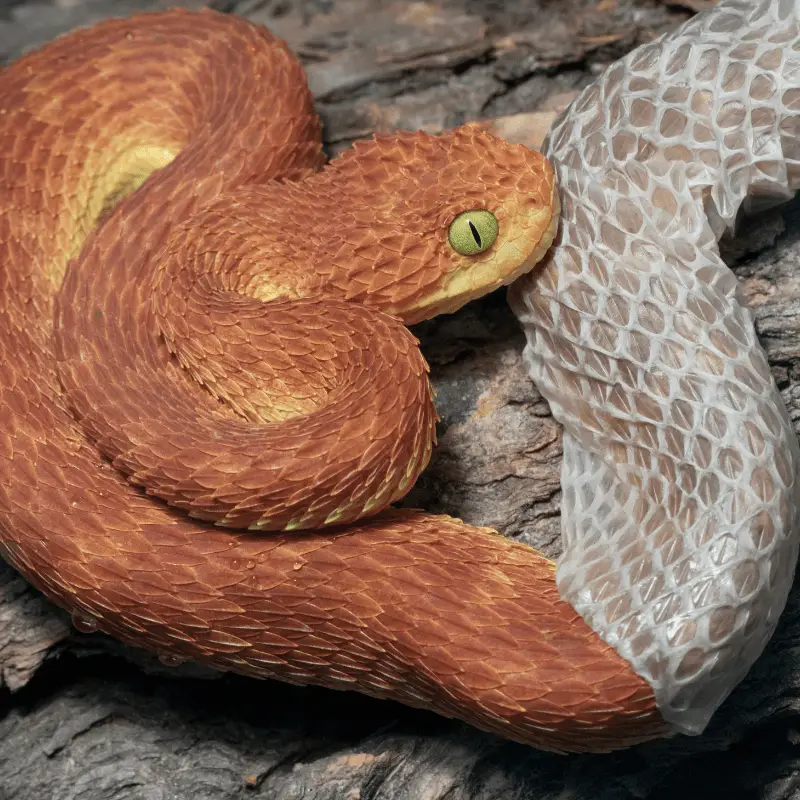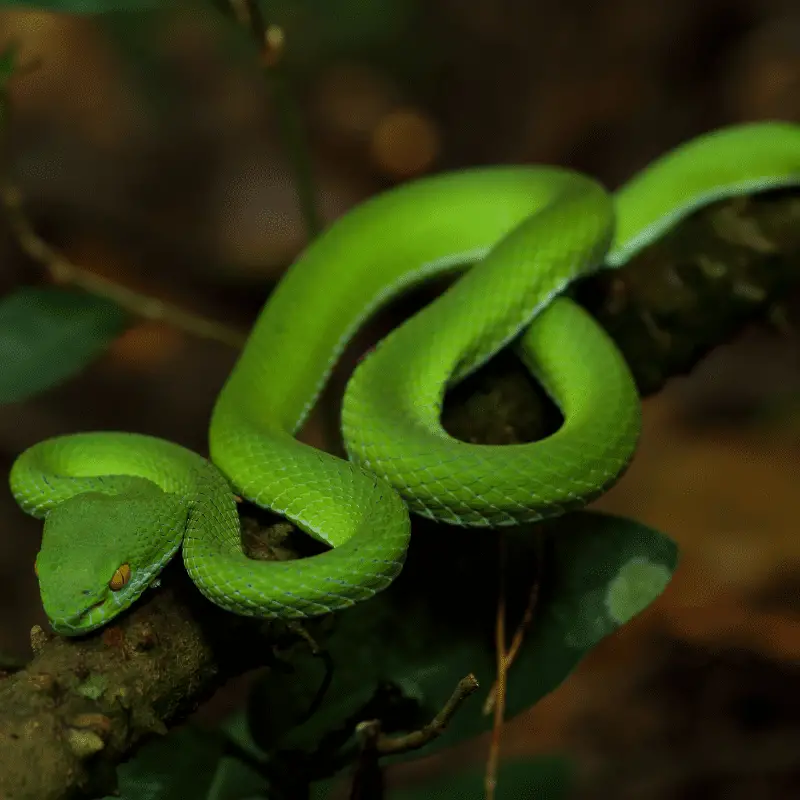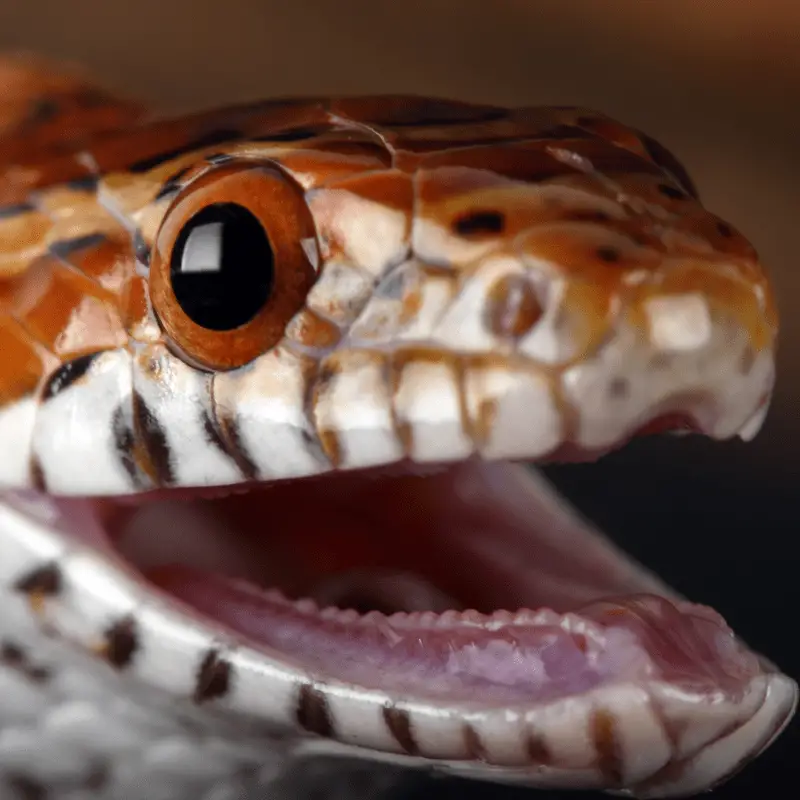Snakes can be one of the most feared creatures on earth. Even in the mythological stories and the holy books, like the Bible, the name often plays a negative role. Along with all these stories, the snakes’ cold gaze can also make them look quite scary to some people. Most people who have stared in their eyes have complained about a hypnotic impact. There is no scientific proof behind this conception. But, there is a reason why the unblinking gaze.
Snakes do not blink. That is why their gaze looks so different from any other animal. The snakes do not blink their eyes because they do not have any eyelids. In place of the eyelids, the snakes have a transparent membrane cover on their eyes. That membrane plays a vital role in protecting their eyes from getting dry.
How snakes protect their eyes?
The eyes of the snakes are covered with an eye scale. These scales protect the eyes against various potential injuries and make sure that they do not dry out. The absence of the eyelids is the reason why the snakes do not blink. It is also why snakes keep their eyes open when they sleep.
While the eye scale protects the eyes, it is also the reason for their poor eyesight. Uniquely, the protective scale is also a part of the snakeskin. That means, whenever snakes shed their skin, they also need to shed their eye scales.
The snakeskin becomes dull before they shed their skins. During this period, the eye scales of the snakes also become cloudy. It disrupts their vision even further. Most of the time, snakes cannot see their targets. They use the movements and the body temperature of the preys to attack them.

How to snakes keep their eyes moist?
Have you ever taken part in an eye staring contest? If you have, then you already know how itchy and dry your eyes feel after keeping them un blinked for an extended period. The air around us snatches away the moisture from our eyeballs if you spend some time without blinking.
However, the snakes do not need to worry about dry eyes as they have a transparent membrane protecting their eyes. Also known as the ocular scale or eye cap, this protective layer plays the same role that eyelids play for us. So, along with protecting the eyes from all kinds of abrasions, the ocular scale also keeps the eyes healthy.
Troubled vision during a shedding cycle
As you already know, the ocular scales of the snakes is a part of their skin. Even though they are transparent, the snakes shed their ocular scales along with their skins. During this time, the old ocular scales in their eyes get replaced with a new one.

If you have a pet snake, you might have noticed that snakes tend to hide around the time of shedding. The reason is impaired vision. You might see that the ocular scales become opaque during this time, causing severe vision impairment. The snake feels more vulnerable and will choose to hide more than expected.
Why does the eye look opaque (cloudy) during a shed cycle?
When a snake is shedding, the snakeskin becomes dull thanks to a milky fluid that the reptile secretes. This fluid creates a barrier between the old and the new skin. Having the fluid barrier between the old skin and new skin makes it easier for them to shed their old skin. This fluid is the reason why the eyes of the snakes get cloudy during this time.
How the snakes shed their skin
When the snakes are ready to shed their old skins, they keep on rubbing their snouts until the skin breaks. They then work down to shed their skin from the lips to the tails. The snakes shed their skins in one piece. It often looks like an upside-down stocking. If you study the old skin carefully, you can easily see the ocular scales.
What happens if a snake cant shed their skin?
Snakes can experience trouble in shedding their skins if they are dehydrated. In such cases, the skin will stick to the eyes or other parts of the body. If this has happened to your pet snake, you should give it a good soak in a tub full of lukewarm water.
You can use your bathtub or the plastic storage containers large enough to give the snake room to enjoy the bath. If your pet snake struggles to shed even after the soak, you should take it to your veterinarian.
Do not try to pick off the skin attached around the eyes or other body parts using fingers or tweezers. You might think you’re helping your pet snake, but your actions will undoubtedly harm them. The veterinarians have the knowledge and experience to get rid of the skin. It is better to leave such a problem to the expert.
How can you tell if a snake is sleeping?
For humans, a heaviness in the eyelids is the best indicator of our tiredness. The same is not so true for the snakes. That is why it might be difficult for the snake owners to determine whether their pets are taking a nap. Or, starring at you, you should check for any signs of movement to determine if your snake is asleep or not.
However, adding to the trying to work out if they are asleep or not makes it more difficult because snakes also like to relax and bask in the sunlight without movement even though they are not sleeping. If you keep a snake as a pet for a long time, you will slowly pick up on their body languages and behavioural clues to understand whether they are sleeping or just relaxing.

Handle your snake safely
If you think that your snake is sleeping, you should handle it carefully. If you disturb or pick the snake up while it is sleeping, it will get startled. That can result in an attack. Also, suddenly waking up a snake causes stress on their body, which can cause harm in the long run.
So, it is better to leave the snake alone if you think it is asleep. Wait till it wakes up, and you see some proper movement. You can also use some tricks, like making noises to wake your pet snake up.
Snakes are unique creatures and require special attention from caregivers. To keep the pet snake at the peak of their health, you need to understand its food habits and behaviour patterns. Consult with your veterinarian first before bringing these intriguing slithery pets home.
Recommended reading:

